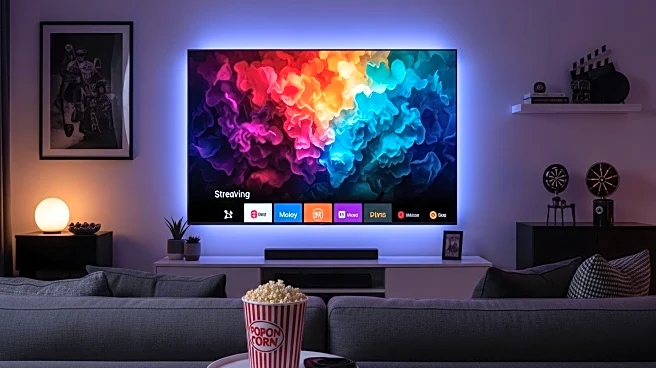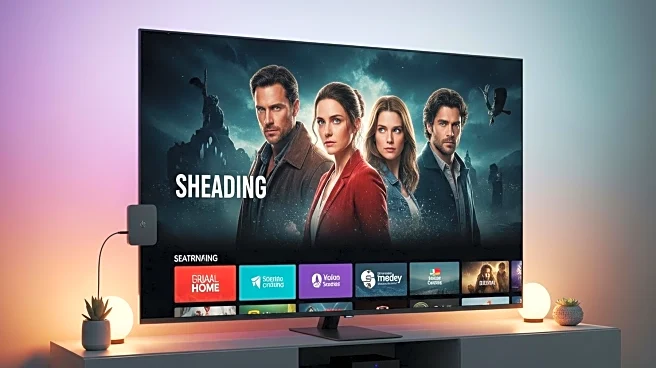What is the story about?
What's Happening?
A recent poll conducted by The Associated Press-NORC Center for Public Affairs Research reveals that streaming services have become the preferred method for watching newly released movies among Americans. Approximately 75% of U.S. adults reported watching a new movie via streaming at least once in the past year, with about 30% doing so monthly. In contrast, only 16% of Americans visited a theater monthly, despite two-thirds having watched a movie in a theater over the past year. The shift towards streaming was accelerated by the COVID-19 pandemic, with convenience and cost cited as major factors. The poll also highlights that streaming is more accessible for lower-income Americans, while younger adults are more inclined to watch new movies on streaming platforms.
Why It's Important?
The growing preference for streaming over traditional theaters signifies a major shift in the entertainment industry, impacting movie distribution strategies and theater revenues. This trend could lead to reduced demand for theatrical releases, affecting box office sales and the viability of theaters. Studios may increasingly prioritize streaming platforms for releases, altering the landscape of film marketing and distribution. The shift also reflects broader changes in consumer behavior, with convenience and cost driving entertainment choices. This could influence future investments in streaming technology and content creation, as well as the development of new business models within the industry.
What's Next?
The film industry may continue to adapt by shortening theatrical windows and enhancing streaming offerings. Theaters might focus on premium experiences, such as IMAX, to attract audiences. Studios could explore hybrid release models, balancing theatrical and streaming strategies. As streaming platforms grow, competition for exclusive content may intensify, potentially leading to mergers or partnerships. The industry will likely monitor consumer preferences closely to navigate these changes effectively.
AI Generated Content
Do you find this article useful?















